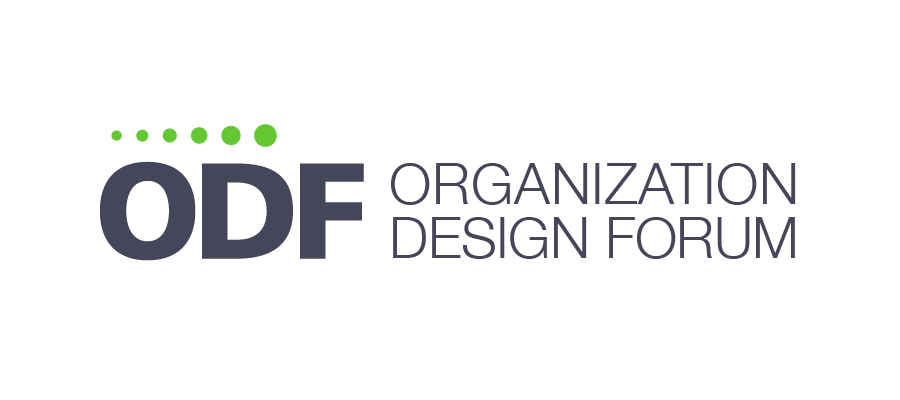Practitioner Toolkit
Below we’ve included tools applicable for a broad range of design challenges. You’ll find these tools particularly useful whether starting out in org design, or an experienced practitioner looking for inspiration to tackle a new problem.
We’ve included tools in 2 categories:
Tools for thinking holistically about organizations and putting theory into practice
Tools to drive outcomes and overcome misalignments
Defining and Designing
Tools for thinking holistically about organizations.

The Star Model
Foundational framework for organization design. The Star Model™ consists of a series of design factors that are controllable by management and can influence employee behavior. A simple mental model for approaching any organization design problem.

Nadler and Tushman Congruence Model
Quick “how to” guide for using one of the most robust and popular organization design models based on the principle that a team or organization can only succeed when the work, the people who do it, the organizational structure, and the culture all “fit” together. A powerful tool for identifying the root causes of performance issues, and s a starting point for identifying how you might fix them.

STS (Socio Technical System) design
Application of socio-technical systems thinking to digital organization design. Adaptive (eco) systemic learning is based upon a backbone of interactions – a common substructure – underlying all adaptive organizations and ecological networks, namely, 3 PERSPECTIVES or lenses that filter through billions of pieces of data so participants can see whole system choices about IDENTITY, about framing of challenges and opportunities for VALUE CREATION, and about organically emergent designs to enhance ECOSYSTEMS.

BCG Smart Design
Links behavior change to organization design. A holistic view of organization design would encompass numerous components: structural elements, roles and responsibilities, individual talent, and enabling mechanisms such as core enterprise decision-making processes, performance management, and talent management. These are the key levers for organizational change, and they are obviously crucial – but their relevance is indirect. To change a company’s performance is to change what happens in the company, that is, what people do: how they act, interact, and make decisions. Workforce behavior is what determines company performance.

Kates Kesler
This video introduces the 9 key questions to ask as part of any organization design project and the tools, based on Galbraith’s Star Model™ and presented by ODF Advisory Board member, Amy Kates.

McKinsey 7S model
A quick guide on when and how to use the McKinsey 7s model, a broad model with applications to organization design and effectiveness. Helps examine how the various parts of your organization work together. For example, it can help you to improve the performance of your organization, or to determine the best way to implement a proposed strategy.

Weisbord Six Box Model
Six labels under which one can sort much of the “funny stuff” that goes on in organizations, both formal and informal. These labels allow people to apply whatever theories they already know in doing a diagnosis and to discover new connections among apparently unrelated events.

Tools Our Community Should Know About?
Driving and Managing Change
Tools to drive outcomes and overcome misalignments impeding performance.

Burke Litwin Model of Organizational Change
Great for defining and establishing cause-and-effect relationships. The model assumes 12 organisational elements that determine a change within an organisation. The model derives its name from two organisational change consultants and was developed in the 60’s by W. Warner Burke and George H. Litwin. It is a useful tool for designing transformation and managing change. It helps understand all aspects of an organisation and to view them from a perspective of change.

The Corporate Rebels Canvas
A tool for transforming to a more progressive culture. The Canvas provides a simple structure for a workshop or discussion about current and desired organization approaches. The 8 aspirational trends are Purpose and Values, Network of Teams, Supportive Leadership, Experiment and Adapt, Freedom and Trust, Distributed Authority, Radical Transparency, Talents and Mastery.

Brains, Behavior & Design Toolkit
Five tools to apply behavioral economics to the framing of problems and developing strategies for changing behavior. Excellent set of tools for encouraging the behaviors that will enable a new organizational design.

Human Systems Dynamics Institute
Over 20 tools to apply to sticky or “wicked” problems, particularly helpful in bringing direction to complex and ambiguous situations.

The Operating System Canvas (The Ready)
A basis for team workshops on why they work the way they do, and to highlight the delta between assumptions, beliefs, and reality. The canvas has the intention to provoke conversation and change. The 12 dimensions of the canvas are Purpose, Authority, Structure, Strategy, Resources, Innovation, Workflow, Meetings, Information, Membership, Mastery, Compensation.

Business Model Canvas
A one page overview that lays out both what you do (or want to do), and how you go about doing it; enabling structured conversations around management and strategy by laying out the crucial activities and challenges involved with your initiative and how they relate to each other. This visual format, first introduced by Osterwalder and Pigneur, is useful for both existing and new organisations and businesses. Existing programmes can develop new initiatives and identify opportunities while becoming more efficient by illustrating potential trade-offs and aligning activities. New programmes can use it to plan and work out how to make their offering real.

Board of Innovation Business Model Kit
A tool to explore and imagine different business models to support your solution. The key to a sustainable business model is ensuring that all stakeholders in the ecosystem are delivering and capturing items of value. The business model kit helps you ideate multiple business model options. In particular, it raises awareness over the value exchange between stakeholders. The business model canvas is a perfect screenshot of an existing, established business model. We suggest to use it after the business model kit.



